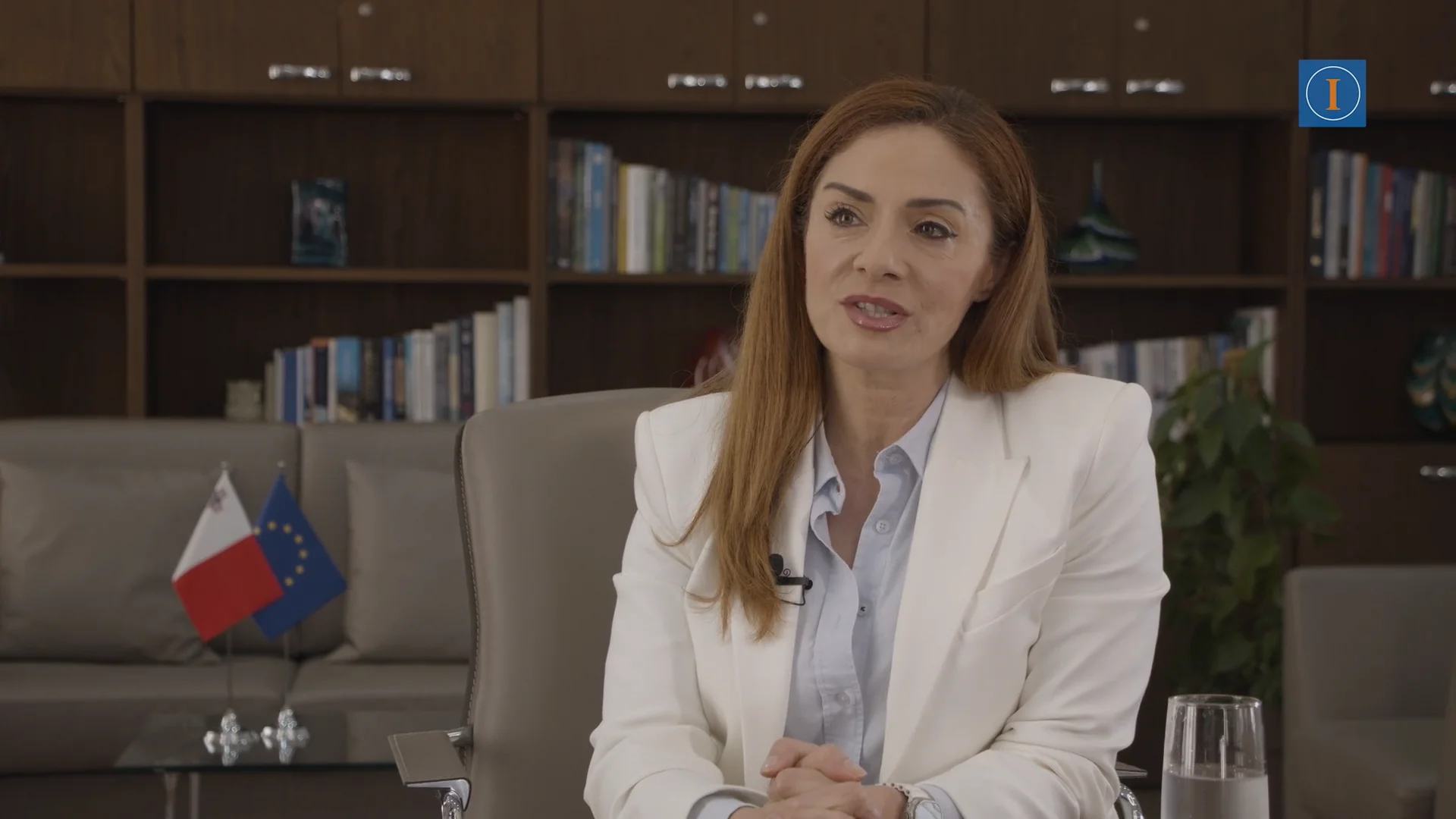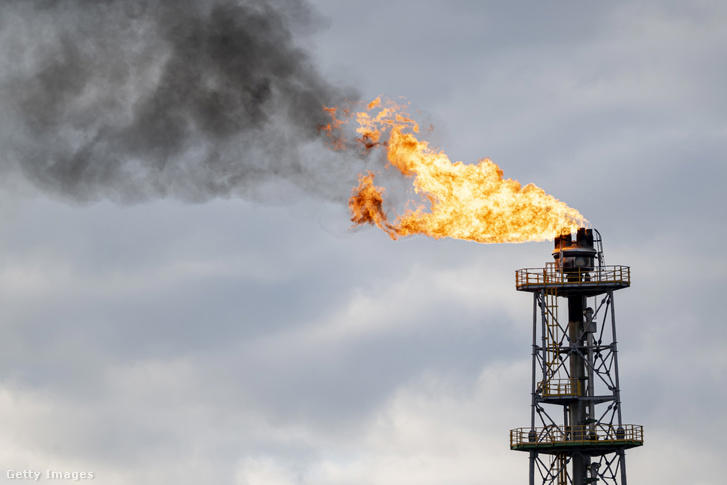
The amount of mixed waste collected reduced by over 30% between 2018 and 2024, Minister for the Environment, Energy and Public Cleanliness Miriam Dalli told The Malta Independent on Sunday.
Specifically, 34% less mixed waste was collected, this newsroom was told, while since the year 2022 the amount of organic waste collected increased by 43.2%. “This shows that the people are making a tremendous effort, and we must continue moving in this direction,” Dalli said. “Together with this, we need investment in technology that would help in that regard.”
In an interview with this newsroom, Dalli was asked about waste, major urban greening projects, energy projects and the electricity distribution system.
Recently, the Nationalist Party had said that the National Audit Office had accepted a request to investigate the public call process for the waste incinerator project in Magħtab.
Asked if she could guarantee that everything was done correctly in the tender process, Dalli described the project as one “through which waste would not simply be burned, but will be turned into energy. If you ask me, this is a project that the country needs. The reality is that if we don’t have these kinds of projects, the landfill will continue to grow.”
“We are doing everything possible for the landfill not to continue growing. Right now we are making certain types of investments not to take up any more agricultural land. I don’t want to take agricultural land for landfills. But not to take agricultural land for it you need to have these kinds of projects.”
Pressed and asked if everything was done correctly in the tender process, she said that “as a minister I would not go into the tender process, and God forbid I did as there are the responsible entities that are in charge of leading it.”
“What I see as jarring is the Opposition’s hypocrisy. You have an Opposition that criticises this project and offers no solution. My question is, what will the Opposition do? Will they not build the Waste-to-Energy project? Secondly, there are Opposition MPs who are involved in this process as they are appearing for some of the consortiums that submitted offers, and so it is as though they are wearing two hats.”
“The country needs to invest in projects that make sense, as one of the biggest challenges we face is waste management.”
Aside from the Waste-to-Energy plant planned for Maghtab, the same area is also set to house the hazardous waste incinerator. Maghtab is located between two major localities, St Paul’s Bay and Naxxar. Asked what guarantees she can give as to whether or not there will be any health impacts on residents, she said: “Every project would have passed through a whole process that looks at the environmental and health aspects. Today’s technology is very different from the technology of the past. When looking at the kind of projects other countries have undertaken, some have waste-to-energy plants in the urban environment, but their impact on the surrounding residents is minimum or inexistant, as technology advanced.”
She mentioned other waste projects, such as the facility in Hal Far which deals with certain kinds of waste.
“Every Wasteserv project related to waste management would have passed through all the relevant and relative procedures that assure the high standards that are needed.”
Urban public space projects
Regarding major urban greening projects, she was asked about the project for Santa Venera. The project would involve roofing over the area just outside the Santa Venera tunnels and creating a public garden on top. It is one of a number of major public open space creation projects that were announced by the government prior to the last general election.
A number of studies for the project have been carried out Dalli said. She also said that here, the government does not want to create congestion issues “considering that a number of other projects are ongoing,” she said, mentioning the Msida Junction project in particular. “We are also looking at what kind of financial models could be created for such a project, she said.”
The minister was responding to a question asking for an update about the major urban space projects that the government had announced prior to the last general election.
Regarding the planned project in Cospicua, on land that was originally earmarked for the American University of Malta, and on which there currently sits a car park, she said: “Permits from the Planning Authority were already issued, an underground car park with a garden on top will be created.” She said that tenders for this project will soon be issued, and work will soon start.
As for the San Gwann piazza project, she said that an application is before the Planning Authority for the creation of an underground car park, which she said would be the first phase of the project.
“Discussions are ongoing in order for a planning application to be moved forward regarding how we will do up the area in front of the square and the road. We worked with Transport Malta to see how best to deviate traffic not to create issues.” Asked to provide timeframes, she hopes that the first works on the car park will begin this year or by early next year.
In January, Project Green CEO Joseph Cuschieri had told this newsroom that the original plan included an underpass, but the agency decided to avoid generating waste and opted for traffic re-arrangements instead. He said that the concept will be implemented as planned, but the only thing that has changed is that the underpass will not be done.
Regarding the St Anne’s Street project in Floriana, the original idea was for the street to be pedestrianised and for traffic to flow through an underpass. However, it had been announced previously that an underpass would not be feasible. “We will not excavate because historical artifacts were found,” Dalli said. “We are in talks with the local council, while a number of meetings have taken place with Floriana residents, and we are looking at how we can start a phase that would give a new look to St Anne’s Street.”
Regarding Floriana in general, she said that there are gardens around the locality on which works were carried out, and others that are being worked on, saying that the government wants to create a walking trail from one garden to another. She mentioned the Pinetum gardens, where consultation with different stakeholders were held in order for a tender to be issued and works to start, and also said that works by Ambjent Malta concluded on St Philip’s garden, “so that we could create a beautiful walk from one garden to another. My vision is for even the work that will be done on St Anne’s Street to become part of it.”
Told that the historical findings means that the St Anne’s Street project cannot be the same, she said that they are looking into how they can take an area where the archways are and expand a bit on that area to create greenery “and create an open space in that area,” while also continuing consultations with the Floriana community to “create areas that make sense for the locality and its residents.”
“If you had to ask me which project I think is on hold, I would have to say the project earmarked for Hamrun.” The plan is to convert the site of a Ħamrun milk factory into a public garden. “But the milk factory is still there as an alternative site for it has not yet been found,” she said.
Land reclamation
In the Malta Vision 2050 document, the government declares its intention to Explore large land reclamation initiatives to address the country’s limited land space.
The minister was asked for her stance on the idea, whether she views it as a potential way to increase green space, and whether she has any concerns about the potential environmental impact.
There are areas where if one were to go for land reclamation there would be environmental issues, she said, and “others where there would be less of an impact. I am convinced that the ministry responsible for land reclamation is taking into consideration all these aspects, as at the end of the day we want to ensure that there will not be a negative environmental impact.”
Land reclamation for a small country like Malta has the benefit of providing more space, she said. She said that “what we have right now as our vision is to, where possible, create open space from the space we have.” She mentioned, for example, changing areas that were just cement into a garden. She also said, among other things, that there were areas that were earmarked for construction which fell under the Lands Authority being turned into gardens. “Our plan is to create as many accessible spaces for people as possible.”
“Despite the small size of our country, we are trying to, as much as possible, not build on government land that could be made accessible to people that was earmarked or included in the development zone including through the rationalisations process in 2006, and open them up for the people.”
Power cuts and the distribution network
Over the past two years people experienced power cuts during the scorching summer heatwaves, and the government has been conducting works on the distribution network to try and solve the problem.
“The Labour Party’s electoral manifesto speaks of investment in the distribution system. What happened two years ago showed how that investment had to be accelerated far more quickly. We had announced a plan of €90 million spread over six years. But after what happened two years ago, we accelerated that plan.” Referring to last year alone, she said the country invested €61 million in the distribution system.
She said that this is not the kind of work where works could stop after reaching a certain point. “We need to keep going with these investments.”
“Among the plans we have for the future, is to strengthen the link between Malta and Gozo, and we also have a number of projects we are looking at in terms of investment in distribution centres, substations and more automation.”
Government ‘doing everything’ to address distribution network issues, minister says
Asked whether she is at a point now where she could say whether the country would not experience any power cuts due to the distribution network this summer if a heatwave hits, she said that the government is “doing everything to address those issues. Comparing last year with the year before that, wherever we conducted works to strengthen the distribution infrastructure we did not have the issues we experienced the year prior.”
The government is looking at addressing the infrastructure in those localities where issues could have been experienced, she said.
“You cannot say that you’ve invested an amount in the energy sector and then stop, because the economy is constantly growing, and we live in an environment that is becoming more electrified. For example families didn’t have ACs when I was young, today people have homes with one, two or even three ACs.”
When it comes to energy provision, she said that the country has enough to meet its needs, “but you cannot stop investing. Right now we are investing in the second interconnector to Sicily.”
Works on the distribution network involve digging up roads for cable-laying, however a lack of coordination between different public entities led to situations where a road would be dug up multiple times due to different works.
Dalli said that this was an issue that bothers her and her colleagues. “It was a point which was also discussed with the social partners in the Malta Council for Economic and Social Development.”
Today, the main entities – Enemalta, the Water Services Corporation, Infrastructure Malta and Transport Malta are working very well together, the minister said.
“We want that coordination to continue improving.”
Regarding the electricity distribution system, she said “there are certain works that need to conclude as quickly as possible.” This, she said, brings with it certain challenges. “But we are looking at addressing those challenges by holding discussions with the main stakeholders,” she said, mentioning that entities talk to local councils, involve the MHRA when it comes to tourism areas, and involve the MCESD.
“I understand the inconvenience that these works cause,” she said, adding that it is in everyone’s’ interest to reduce that inconvenience as much as possible. “Our direction is to continue strengthening coordination between entities.”
Regarding the second interconnector, if complications don’t arise and work continues at the current pace, the project would conclude by the end of 2026, Dalli said.
“There were a number of calls for offers that unite different parts of the project. It is a major project, one that requires infrastructural works, engineering works, cable laying on land and under the sea. It is quite a complex project,” she said, mentioning that this is being done in a situation of certain geopolitical instability. She said that when looking for slots for these cables to be manufactured, these are “tight. Despite these challenges, the project is moving forward.”
The Malta Vision 2050 mentions exploring the possibility of a third connection with EU and/or North Africa. Dalli said that the government is looking ahead in terms of the country’s requirements in the future, adding that a growing economy, more electrical appliances, the transition to more electric vehicles and the shore-to-ship project means that energy demand will increase.
“We want to meet those needs beforehand. These are projects that take time, and are not ones which just take two years to conclude (…) so we are looking at having more interconnections. Primarily we are looking at energy interconnections, as we also need to see our country continue moving in the direction to lower emissions.”
She said that the country made a major change when it moved from using heavy fuel oil to LNG. It is still a fossil fuel, “but is one of the least dirty ones,” she said. The government is looking at increasing clean energy generation, “that would not generate emissions. That is why we are looking at interconnections.”
“We are speaking with countries in the southern Mediterranean and are looking at how we can possibly have interconnections with different countries.”
“It also creates more stability between countries and is an economic opportunity to help countries move closer together.”
Asked if she thinks a third interconnection is more likely with North Africa, she said that “right now we are analysing everything. Our absolute priority will be for our country to be well served, that our country meets the requirements for the projects it wants to have at the opportune time,” she said, adding that this is a long-term vision.
A second part of the interview will be carried tomorrow












